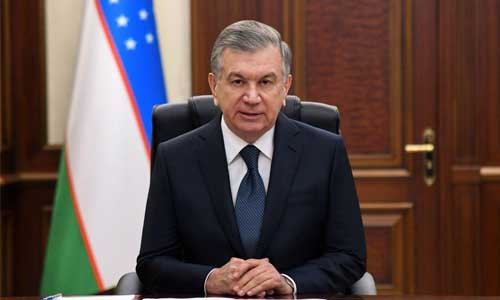Like all other Central Asian countries, Uzbekistan faced major challenges after its independence to pursue an effective foreign policy, particularly, in the light of striking a balance within its relations with major powers like US, Russian and China. As a matter of fact, Uzbekistan, under Islam Karimov, was not able to determine its foreign policy goals clearly; therefore, its policies kept on fluctuating. However, under Shavkat Mirziyoyev, Uzbekistan has experienced dramatic changes in its foreign policy. When Shavkat became the president of Uzbekistan in 2016, he had already gathered a valuable experience as a politician, starting as a governor of Jizzakh region in 1996. In 2003, he was appointed as the Prime Minister by Karimov himself; therefore, he already had a strong understanding of the Karimov’s political strategies and policies.
After he started his responsibilities as president, Shavkat paved the way for a foreign policy characterized by openness, dynamism, independence and pragmatism. Keeping regional cooperation and economic well-being in consideration, Shavkat has been able to pursue a foreign policy that has stunned even his critics.
He started his mission with improving Tashkent’s credibility in regional and international arena by introducing domestic reforms like liberalizing economy; most importantly removing the peg from the US dollar. Through these reforms, Uzbekistan was able to sign agreements with international financial institutions and started negotiations with World Trade Organization about its accession.
At the regional level, Shavkat’s policies have brought about remarkable changes. He has seen the region as a ‘single organism’ with the countries sharing common geographic and economic and cultural space. Most importantly, his policies have not only been confined to theory, rather they have been converted to practical efforts. These efforts have mostly been initiated by Shavkat himself against all odds.
In March 2017, Shavkat went to Turkmenistan for his first trip abroad. Several agreements were signed during the visit including the significant ‘Uzbekistan – Turkmenistan Strategic Partnership’. He also oversaw the construction of railroad and road bridges between both states on the Amu Darya. Such connectivity projects would definitely support Uzbekistan in the use of the Turkmen seaports in Caspian to trade with the Caucasus and Europe in addition to facilitating the planned transit corridor between Uzbekistan, Turkmenistan, Iran and Oman.
The second international visit of Shavkat was to Astana, wherein he met with Nursultan Nazarbayev, former President of Kazakhstan and set up a joint business forum. A plan for further economic cooperation was also signed. Both states planned to move towards improving military relations in the security sector.
In March 2018, Shavkat become the first President of Uzbekistan since 2000 to make a visit to Dushanbe. During the visit, the leaders of both countries signed 27 bilateral agreements, including the opening of 16 border crossings points and 30 days visa-free entry, in addition to border problems.
Again the first visit of its kind since the year 2000, Shavkat, on 5 September 2017, paid a visit to Kyrgyzstan.
The visit by Shavkat helped to establish mutual confidence and understanding on many issues and a shared desire to build relationships. He agreed to take part in the building of a water reservoir Kambarata-1 in Kyrgyzstan – which had so far been a source of friction between the two countries. About 80% of their boundary disputes have already been settled by both sides since the visit.
The push under President Shavkat Mirziyoyev has been to change Uzbekistan through tangible reforms. His policies reflect a belief in regionalism of Central Asia and is premised on the peaceful co-existence through dialog to settle unresolved disputes. The main driving force for Shavkat’s foreign policy has been economic development. His viewpoint is not only a conventional strategic ‘Great Game’ but a modern geo-economic model for Central Asia.
President Shavkat Mirziyoyev’s approach towards Afghanistan has been very positive as well. In fact, he has recognized Afghanistan as a part of wider Central Asia, including Mongolia and the Caucasus. In one of his statements pertaining to Afghanistan he said, “The security of Afghanistan is the security of Uzbekistan, a guarantee of the stability and development of entire Central and Southern Asian region.” Thus, he considers the security of the country connected to Uzbekistan, and also to that of the South Asia.
Uzbekistan has the potential to play a significant role in Afghanistan particularly in the light of the ongoing intra-Afghan talks and also in supporting Afghanistan economically after the withdrawal of international security forces. The country can provide a gateway for trade through its Termez Cargo Center, which uses its rail and road network. This network is now being upgraded by Asian Development Bank (ADB), under Central Asia Regional Economic Cooperation (CAREC), which also includes Afghanistan as a beneficiary. Under CAREC, Hairatan is being connected to Mazar-e-Sharif, which can then be further extended to Herat and ultimately to Iran. Moreover, Uzbekistan’s Navoi International Airport can also play a role in providing trade transit to Afghanistan.
Thus, there are expectations that Uzbekistan’s foreign policy under Shavkat Mirziyoyev will help realize all these potentials and support Afghanistan in its struggle to stand on its own economically after the withdrawal of the international forces and after the intra-Afghan peace talks, if the talks are able to achieve something worthwhile in the domain of peace and tranquility.
Home » Opinion » Uzbekistan’s Foreign Policy Under Shavkat Mirziyoyev
Uzbekistan’s Foreign Policy Under Shavkat Mirziyoyev
| Sajjad Aasim

